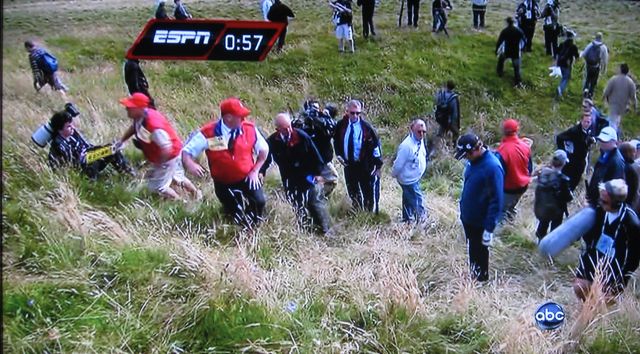Rough Questions For The R&A
/ I know that course setup talk has most writers longing for a return to the cricket beat, but the excessive role of Turnberry's rough deserves more scrutiny. And since several scribblers have access to the R&A's Peter Dawson the Monday following, we can only hope they'll probe about the course preparations that he is so much a part of.
I know that course setup talk has most writers longing for a return to the cricket beat, but the excessive role of Turnberry's rough deserves more scrutiny. And since several scribblers have access to the R&A's Peter Dawson the Monday following, we can only hope they'll probe about the course preparations that he is so much a part of.
On American TV we heard consistently about the "thick undergrowth" of "overseeded rye and bent" grasses. Native grasses on a links are traditionally fescue with other grasses mixed in, but I sensed that the repeated use of "overseeded rye and bent" was a subtle message from Curtis Strange, Tom Weiskopf and Paul Azinger that they found the dense undergrowth situation peculiar. And certainly the R&A's pre-tournament implication was that "nature" created this situation.
But lost ball rough next to a par-3 green? That is not the product of nature.
Some will argue that the course having been closed for so many months leading up to the championship led to such a situation. No traffic certainly is a legitimate explanation but there was also evidence of irrigation overspray in some of the more penal roughs. If it's a wet spring, why is irrigation necessary?
I'm no agronomist, but there are ways to thin excessive rough if you deem it excessive (they're called sheep). It's also worth asking if a special overseed took place either for aesthetic or resistance to scoring purposes.
Another lesser issue is the lack of width. It's no secret that the R&A drove changes to Turnberry, including over 200 yards of length and 21 new bunkers. The R&A contends that the course was not narrowed since 1994 and the slivers of fairways surrounded by lost ball rough are all merely a product of nature. But as we saw, with firm conditions and a typical 20 m.p.h. wind, things can get a bit goofy.
Dawson, who supervised the changes, defends the fairway widths as merely working around the bunkering. But as you may have noticed, nearly all of the new bunkers tightened the course and were designed to put the player on the defensive. So yes, the bunkers dictate the width, but then that means the R&A is using bunkers to narrow the course. Why?
And is this really the essence of links golf, or still ultimately about reducing the number of times players can hit drivers and reveal just how far they can drive it with today's equipment?











